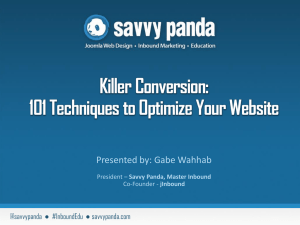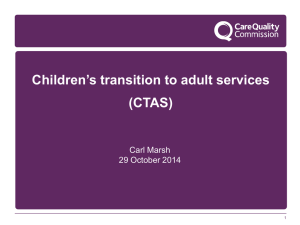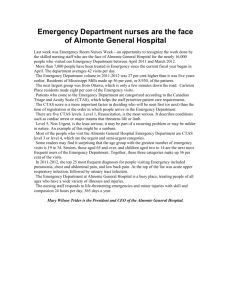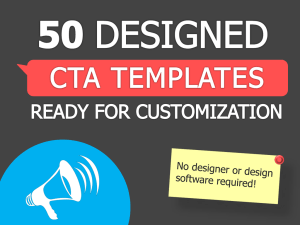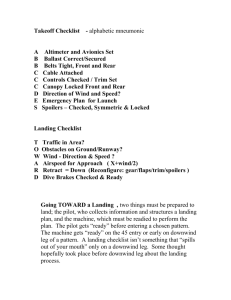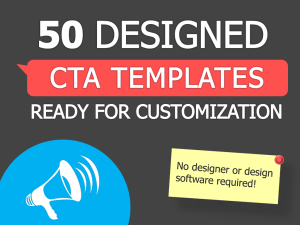5 Web Site Essentials For Converting Prospects To Leads
advertisement
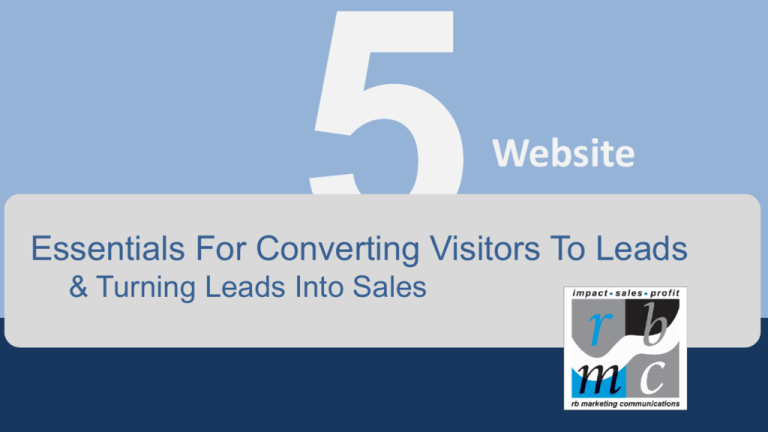
Website Essentials For Converting Visitors To Leads & Turning Leads Into Sales INTRODUCTION Driving visitors to your web site is only half the job: You now need to focus on reducing your visitor bounce rate, generating sales leads and increasing your site’s customer conversion rate. Ann Smarty at To begin, take a close look at your site’s analytics reports. People visit Internet Marketing web sites based on their site content expectations. They stay based on Ninjas reports a whether what they see and read matches their content expectations. 50% site bounce rate is excellent, a If your bounce rate is high, then you need to start thinking more like your 60 to 70% bounce target customers. Fixing your site’s content is Job #1 because you can’t rate is typical , and generate leads without engaging content. 80% is poor. What are your customers urgent, burning problems? What makes them feel like, “My hair is on fire!” Does your web site address those painful problems? If there is a disconnect here, chances are you have a content problem. Today’s web buyers are driving in the fast lane. They want more than the specs, more than a low price, more than a rah-rah, “We’re the best”. They want opportunities to learn, to be engaged and then comes the sales lead and customer conversion. What Is Content Marketing? Content marketing is something that you’re probably already doing in one form or another. Great online content speaks to customers directly about their urgent everyday problems. Content marketing is a strategic approach to attracting and retaining customers with useful problem-solving web pages and online materials, such as ebooks, tech articles, case studies, infographics, videos and more. Effective content answers a buyer’s questions during the purchase journey. I like to think of content marketing as a method to educate your customers. It doesn’t involve selling. It doesn’t involve a pitch for products or services. It’s all about helping your prospects with answers to their pressing problems, which your products or services are logically designed to address. If you can consistently show your customers the value of your solutions, they’ll reward you with their business. Driving Traffic To The Sales Funnel Your web site plays a huge role in your customer’s purchase journey. Your site and the content on it are their point of entry in the search for a new product or service. The content you provide on your web site helps prospects move from general awareness at the top of the funnel to purchase decision readiness. Have you thought about how to move prospects through each level of readiness? Think about the types of content and calls to action that will support your buyer’s needs in terms of: • Problem solving • Credibility building • Budget availability • Purchase authority • Need and timing Conversion Driving traffic and engaging visitors requires great content. Visitors to your site are looking for answers to their problems, and once they find those answers the next step is to get your visitors to convert themselves into a lead with sales potential. If they leave without providing some information you’ll lose the opportunity to nurture them until they are ready to buy. Here are some essential must-haves for increasing your web site’s conversions. Effective Calls-to-Action The goal of a successful call-to-action (CTA) is to drive a visitor to take a desired action. CTAs are typically kept above the fold or in clear sight on a page so visitors know where to take the next step. CTAs are the key to lead generation but they need to be done right to convert traffic into leads. • Make them bigger and bolder than most other elements on the page, but don’t overdo it. • Be sure your CTAs are visible above the fold with no scrolling; don’t bury them at the bottom of the page. • Consider colors of the CTA, whether it is a link, button or image. Make them look so good people will want to click on them. Offer CTAs that provide value, like guides, whitepapers, estimates, etc. “Contact Us” is the worst form of a CTA. Don’t rely on that as your only option for conversion. • Make the CTA look clickable. You can do this by making a button or adding a hover effect to an element. • Less is more. Keep it simple and clear what is being offered. • Test when possible. Try testing different colors (e.g. red verses green buttons), language, and placement to see which CTAs get more clicks and drive more leads (refer to the “Messaging” section above for A/B testing tools). Here are some good examples of calls-to-action: Clear CTAs CTA Example 1: Freshbooks CTA Example 2: HubSpot Good CTAs CTA Positioning So you have Call-to-Actions, but how will people find them? You want to think about where you will be placing your CTAs. You don’t want to dump CTAs everywhere. That will give people too many options or not the right options at the right time. Consider this: • Segment your top-of-the-funnel and middle-of-the-funnel offers. Place top-of-funnel type offers (whitepapers, downloads) on top-level pages. Add middle-of-funnel offers (request a quote, trial, pricing) as the prospect is digging deeper and learning more about your offering. • Place CTAs both above and below the fold. Placing CTAs above the fold is important because that area of a page gets the most views. However, there are still other areas of a page to promote your CTAs. Add some at the bottom of pages and within body content as well. • Some studies suggest placing CTAs to the right of the page work better but testing this will ultimately determine what’s best for your website. Placement of CTAs can impact conversion. Testing is the only way to know which options work best! • Use thank-you pages for additional CTAs. A thank-you page or message is what is seen right after someone completes a web form. Many times there is plenty of real estate to offer more downloads and CTAs. Once a prospect completes a form, don’t stop there. Offer them additional downloads, however if possible, do so without requiring them to complete another form. • Test, test, test! As indicated in the example above, it’s unclear which version will drive the most conversions. Test different placements to know which one works best for your website. Landing Pages Now that you have some awesome CTAs you need to drive those links to landing pages. Landing pages, sometimes called a “Lead Capture Page,” are used to convert visitors into leads by completing a transaction or by collecting contact information from them. Landing pages consist of: • A headline and (optional) sub-headline • A brief description of the offer/CTA • At least one supporting image • (Optional) supporting elements such as testimonials or security badges • And most importantly, a form to capture information Landing pages are necessary to implement. Landing pages direct your visitors to one particular offer without the distractions of everything else on your website. Visitors are on a landing page for one and only purpose: to complete the lead capture form! What makes an effective landing page? • Include the elements on the previous page and only what is needed. Keep your pages simple and minimize distractions. • Never ever use your homepage as a landing page. • Remove main site navigation from the landing page so visitors can focus on completing the form and not continuing to search your site. • Make it very clear what the offer is and make it irresistible. • Absolutely make sure that the content on your landing page matches your call-to-action. If there is a disconnect in your messaging visitors will hit the Back button. • Reduce friction – don’t make visitors think too much or do too much work (i.e. reading). • Use the right form and only collect the information you absolutely need (see must-have Forms for more details). Effective landing pages are what will turn your website into a lead generating machine. Example of a bad landing page: 1. Not sure what this page is offering. 2. Not clear what I’d be signing up for? “Free 2 Week Trial” is hidden. 3. Way too much text. No one will ever read all that! 4. Screen shots of the product are very confusing. 5. No forms directly on this page to capture prospect information. 6. Length of the page might be too long. 7. Selling too much on features and not value. 8. No customer proof: testimonials or case studies. Example of a good landing page: 1. Main navigation has been removed 2. HubSpot logo remains in the top left corner. 3. Clear headline describing the offer. 4. Clear image of the offer. 5. Brief description of the offer including bullet points for scanning. 6. Lead form directly on the page with sub- headline re-emphasizing the offer. 7. Content focuses on value. 8. Not too long. Forms Forms are the key to a landing page. Without them, there is nothing for the visitor to do on that page. Forms come in handy when it’s time for people to sign-up, subscribe to your site or download an offer. You might be wondering how much or how little information you should require with a form. There is no magic answer when it comes to how many fields your form should contain but the best balance would be to collect only the information you really need. The fewer fields you have in a form, the more likely you will receive more conversions. This is because with each new field you add to a form, it creates friction (more work for the visitor) and fewer conversions. A longer form looks like more work and sometimes it will be avoided all together. But on the other hand, the more fields you require, the better quality those leads might be. The best way to determine what works best is to test it. Recommendations for landing page forms: • Only ask for the information you need for you or your sales team. Also avoid asking for sensitive information that companies or consumers may not want to disclose. • Consider the value of the offer. The more valuable an offer may be perceived, the more information you may be able to ask for in return. If it’s a newsletter subscription, only ask for email address (and maybe first name, at most). • Reduce anxiety - People are more resistant to give up their information these days, especially because of the increase in spam. Add a privacy message (or link to your privacy policy) that indicates their email will not be shared or sold. • Don’t use the word “SUBMIT” on your form buttons! No one wants to submit anything. Instead, try “download whitepaper,” “Get your free eBook,” or “Join our newsletter.” • If advertising a downloadable offer as your CTA, fulfill the request instantly. For example, if your form is for a whitepaper download, include a link to download that whitepaper on the very next page (typically called a “thank you” page). Another option is to send an auto-responder email containing a link to the offer but it’s recommended it’s given right away upon form submission so people don’t have to dig in their email for your content. Newsletters Speaking of newsletters, you should definitely offer a newsletter subscription on your website. Not all CTAs need to be big offers. Newsletters or mailing lists are the perfect way to collect email addresses so you can nurture prospects over time to become leads. Just make sure it’s easy for people to find your subscription form. Conclusions The internet has changed everything. The strategy behind and the quality of your web site’s content is essential for inbound marketing success. It’s the nectar that attracts the customer bees. Inbound content is the hub that integrates search engine optimization (SEO) rankings, social media, blogging, landing pages and the calls-to-action that drive traffic, leads and sales. Helpful content is creating a sales paradigm shift on the web. After all it is these components that generate sales and revenue for your business. Inbound marketing is the key to filling your sales funnel with qualified leads and your website is where education, engagement and conversion take place. Follow these guidelines and you will soon have a great website with unique content that generates traffic, leads and sales. But don’t stop there. A website never truly stops growing. Keep learning and stay tuned for more updates. Thanks for reading. About Us RB Marketing Communications, Inc. is a web marketing agency specializing in content marketing and inbound marketing. We serve clients in a variety of businesses: professional services, small business retail, nonprofit organizations and technology companies. We help clients connect with customers online to grow their businesses. What We Do Let us help you focus on the important web marketing strategies and tactics that drive online success. Our services include: brand development, content and inbound marketing, blogs, social media, web site design and search engine optimization, public relations, advertising and more. Who We Are With over 20-years of experience in marketing, sales, advertising, public relations and sales lead management, we’re here to help you turn your web site into a revenue engine. We know the factors that drive customers to make purchase decisions and how the web influences those decisions. Get Your Free Inbound Marketing Assessment Liked what you read? Why not sign up for RBMC’s free Inbound Marketing Assessment?
